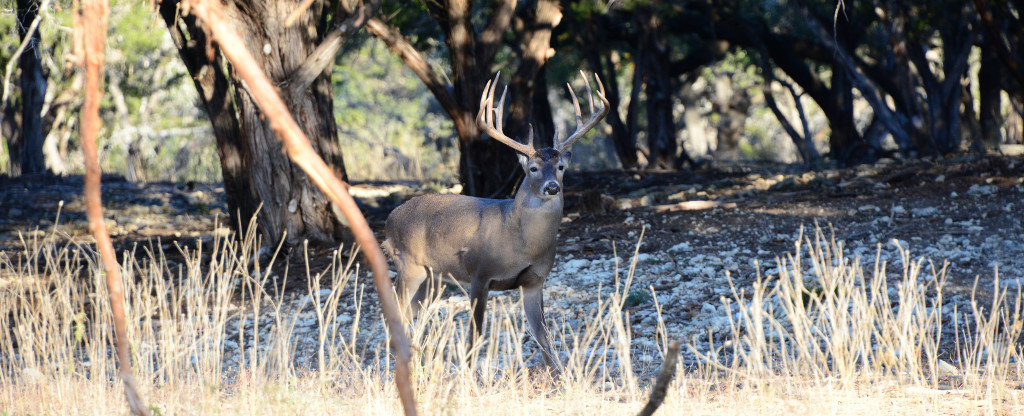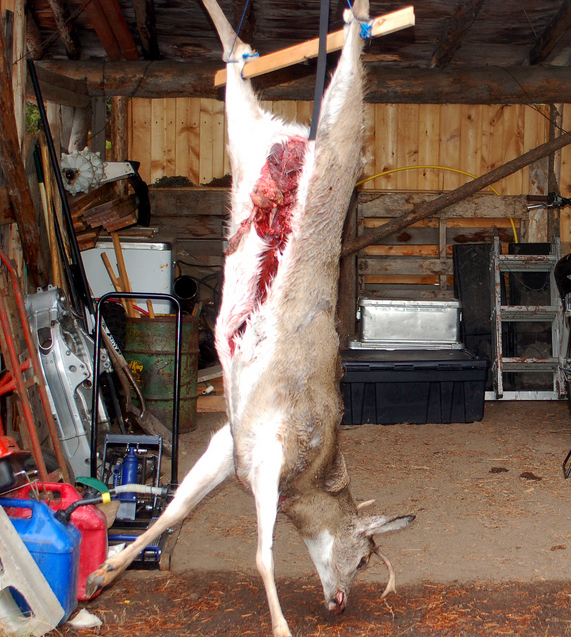 There are several things that are important for successfully bringing down both large and small game. Naturally, a hunter wants to have a good rifle (or a good handgun, if that is what they are using for the hunt). However, having a great rifle, scope and the best ammunition isn’t going to be all that helpful if the rifle isn’t properly sighted in. This is as true of using open sights as it is when using a scope. Let’s take a look at the importance of sighting in a scope or open sights.
There are several things that are important for successfully bringing down both large and small game. Naturally, a hunter wants to have a good rifle (or a good handgun, if that is what they are using for the hunt). However, having a great rifle, scope and the best ammunition isn’t going to be all that helpful if the rifle isn’t properly sighted in. This is as true of using open sights as it is when using a scope. Let’s take a look at the importance of sighting in a scope or open sights.
Accuracy in Shooting
It isn’t at all hard to understand that if a hunter uses the sights or scope of the rifle, the farther off those sights or scope are, the farther the bullet is going to be from the intended target when it hits. Accuracy in shooting is extremely important because if the sights are off, it becomes quite possible and probable that the hunter will miss the target entirely.
Even if they hit the target through some great fortune, the chances are that the hit will maim the animal rather than bringing it down. This creates unnecessary suffering for the animal and a great deal more effort in tracking, for the hunter. An expert hunter is likely to try for a head or neck shot, since it produces a quick kill without damaging much meat, but if the sights are off and they manage to hit the animal, they could have a gut shot when they were aiming for the head. This isn’t a good thing.
*Related: Knowing When To Put the Rifle Down
Of course an expert hunter is likely to go out and squeeze off a few rounds prior to hunting, to make sure that the rifle is properly sighted in. At least, they should do this.
Sighting for Distance
There are four general directions the sights or scope can be adjusted: Up, down, right and left. The right and left sighting are important for being able to keep from hitting behind or in front of the target or on one side or the other of it. The importance of the up and down adjustments when sighting in are a little less obvious.
Gravity affects the bullet so that even with a rifle that has a relatively flat trajectory, the bullet is actually describing an arc. That is, the moment it leaves the muzzle, it begins to drop. If you held a bullet next to the muzzle and let it go the moment the rifle was fired, the discharged bullet would hit the ground at the same time as the one you released hit the ground.
Bullets travel at a great speed, but it doesn’t take much thought to understand that if you are aiming at something that is 100 yards away, the bullet is going to hit higher than if you are aiming at something that is 300 yards away. This isn’t even accounting for the fact that the bullet slows down as it moves through the air, due to friction and air pressure.
Ultimately this means that if the rifle is sighted in at 100 yards and the hunter shoots at a target that is 300 yards away, it is likely that they will undershoot the target. If the rifle is sighted in at 300 yards and they shoot at something that is only 100 yards distant, they will likely overshoot what they are shooting at. In either case, the result will probably be a miss and a wasted opportunity.
If you are going to be hunting in dense underbrush, it then is apparent that your rifle should be sighted in for a shorter distance than it might be if you were hunting in flat land with few obstructions. Sighting in properly is of huge importance in bringing down the animal, regardless of what you are hunting.
Personal Testimony
I can personally attest to how important properly sighting in the rifle could be. My rifle of choice is a .300 Savage and the last time I hunted prior to this year was in open country. The rifle was sighted in for 300 yards, which is what I’d expected for a shot in open country. The problem is that I was so excited about having the opportunity to go hunting that I neglected to remember that this whole area is heavily forested, so a shot of more than 100 yards would be rare. I made the mistake that beginners make, and certainly not befitting a seasoned hunter like me. I didn’t sight the rifle in for the shorter distance before I went hunting.
The first time we went out, we spotted a small herd with a very nice four-point buck. They weren’t even skiddish, though they knew that we were watching them. They were also only about 30 yards away. It was an ideal situation and once the does moved out of the way, I had a clear shot. I was well supported and leaning over the hood of the car, too, so with such a steady stance, I couldn’t miss.
I took aim on the spine of the deer’s neck. I squeezed the trigger. The buck and the rest of the deer instantly bounded away, with the buck unscathed. Why was this? He was 30 yards away and the rifle was sighted in for 10 times that distance. I overshot that beautiful buck by a mile, figuratively.
Sighting in your rifle is extremely important and not doing it properly is a mistake that even veteran hunters can make. If you want to have a successful hunt, get that rifle sighted in before you even begin. Don’t trust that it is still ready from last year, either. Just get out there and do the sighting in before you wish that you had listened to this advice. Regardless of the animal that is being hunted, it can be the difference between success and failure.
Related: Scopes 101 Part 3 Windage, Elevation and Parallax Adjustment
Image by tpsdave



